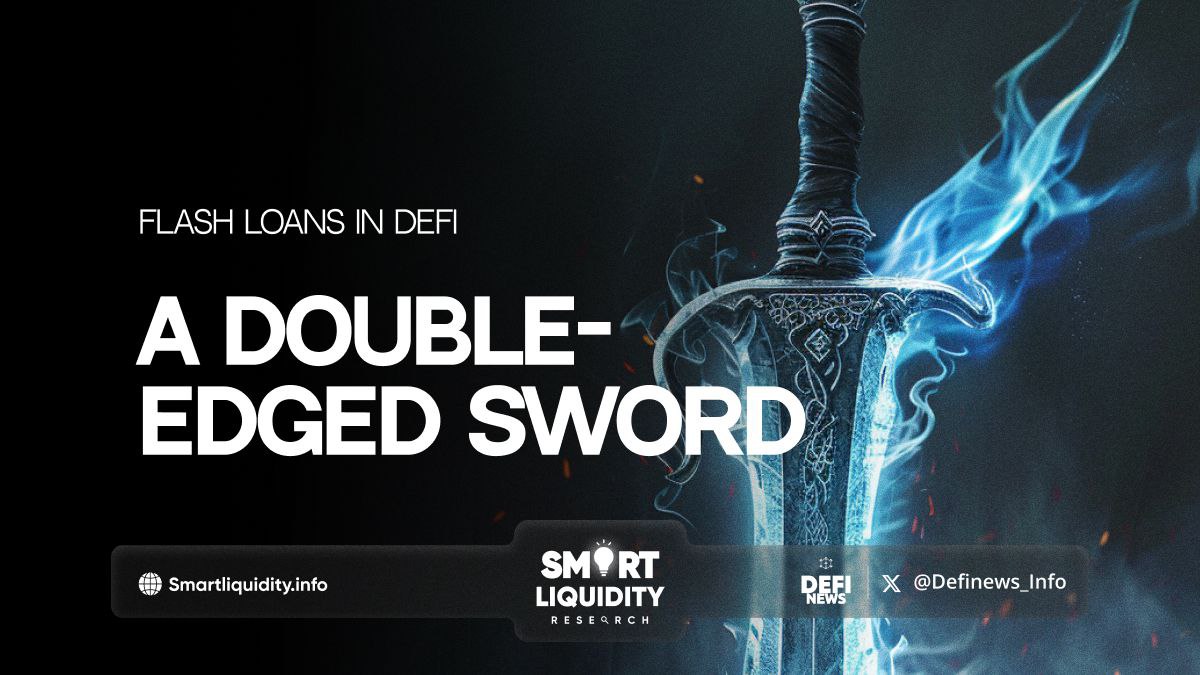Flash Loans in DeFi: A Double-Edged Sword


Flash Loans in DeFi: A Double-Edged Sword! The decentralized finance (DeFi) ecosystem has revolutionized the financial world by enabling permissionless, borderless, and trustless transactions. Among its most intriguing innovations is the concept of flash loans—a powerful financial tool that allows users to borrow large amounts of cryptocurrency without any collateral, provided the loan is repaid within the same transaction block.
While flash loans offer numerous opportunities, they also pose significant risks, making them a double-edged sword in the DeFi space.
The Mechanics of Flash Loans
Flash loans are unique to blockchain technology, particularly within Ethereum-based DeFi protocols. The fundamental principle behind flash loans is that they must be executed and repaid in a single transaction. If any part of the transaction fails, the entire process is reverted, ensuring that the lender’s funds are never at risk.
This mechanism allows users to access large sums of capital for a brief moment, enabling them to execute complex financial strategies such as arbitrage, collateral swapping, or even liquidations. Flash loans democratize access to capital, as anyone with technical know-how can leverage them without needing significant upfront funds.
The Benefits of Flash Loans
- Arbitrage Opportunities
Flash loans enable traders to exploit price differences across various DeFi platforms. By borrowing a large amount, they can quickly buy low on one platform and sell high on another, profiting from the price discrepancy. - Efficient Collateral Swaps
Users can utilize flash loans to swap collateral across lending platforms, optimizing their positions without needing to own large amounts of capital upfront. - Automated Liquidations
Flash loans can be used to automate the liquidation of undercollateralized positions, ensuring that users maintain healthy loan-to-value (LTV) ratios and avoid penalties. - Decentralization and Accessibility
Flash loans exemplify the ethos of DeFi by providing access to financial tools that were previously available only to institutional investors or wealthy individuals.
The Risks and Challenges
While flash loans offer immense potential, they also introduce several risks and challenges that can undermine the stability and security of the DeFi ecosystem.
- Exploitation and Attacks
Flash loans have been used in various high-profile attacks on DeFi protocols. Malicious actors can manipulate market prices, exploit vulnerabilities in smart contracts, or drain liquidity pools, leading to significant financial losses. For instance, flash loan attacks have resulted in the loss of millions of dollars from protocols like bZx, Harvest Finance, and PancakeBunny. - Smart Contract Vulnerabilities
The reliance on smart contracts means that any bug or vulnerability in the code can be exploited using flash loans. The immutable nature of blockchain transactions makes it difficult to reverse the damage once an attack has been executed. - Market Manipulation
Flash loans can be used to artificially manipulate market prices, causing sudden and extreme price fluctuations. This can lead to a loss of trust in the affected platforms and create instability in the broader DeFi ecosystem. - Regulatory Concerns
The anonymity and borderless nature of DeFi, combined with the potential for flash loan exploitation, have attracted the attention of regulators. There is a growing concern that these tools could be used for money laundering, market manipulation, or other illicit activities, prompting calls for increased oversight and regulation.
Mitigating the Risks
To harness the benefits of flash loans while minimizing their risks, several strategies can be employed:
- Improved Smart Contract Security
To boost smart contract security, rigorous auditing, formal verification, and decentralized oracles are advised. These measures help safeguard against vulnerabilities and flash loan attacks. - Enhanced Protocol Design
DeFi platforms can use TWAPs, circuit breakers, and decentralized governance to reduce flash loan attacks and market manipulation impact. - Education and Awareness
As flash loans are a complex financial tool, educating users and developers about their risks and potential misuse is crucial for maintaining the integrity of the DeFi ecosystem. - Regulatory Collaboration
Engaging with regulators is essential for DeFi’s sustainable growth, fostering innovation while ensuring user protection in the financial system.
In Summary
Flash loans in DeFi offer innovative financial opportunities but come with risks. They provide access to capital and complex strategies in decentralized finance. To prevent misuse, strong security, protocol design, and regulatory oversight are crucial. Balancing their potential and risks is key to maintaining their role in innovation in the evolving DeFi space.




